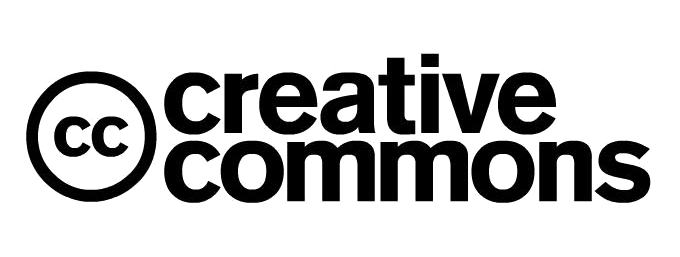The ideas of E. P. Ilyin and their implementation in our research
DOI:
https://doi.org/10.33910/2686-9527-2019-1-4-323-329Keywords:
E. P. Ilyin, ideas, research, results, correlationAbstract
The author describes meeting E. P. Ilyin in 1974 at the All-Union Scientific and Practical Conference devoted to the current issues of physical culture and sport, which was held at the Faculty of Physical Education of Kazan State Pedagogical Institute (where the author worked as a teaching assistant at the Department of Gymnastics). Professor Ilyin and the author established rapport during that memorable first encounter and enjoyed good fellowship since. Fate decreed that in 1978 the author was enrolled as a Doctoral student at the Department of Ergonomics and Engineering Psychology, and Doctor of Psychological Sciences, Professor Ilyin was appointed as his Thesis Director. In their further research, the author implemented Ilyin’s ideas, i.e. “on the unjustified approach to the assessment of the nervous system properties, dividing them into ‘good’ and ‘bad’, suggested by I. P. Pavlov”; “on indisputable advantages of a ‘weak’ nervous system in certain types of employment activities”; and “on the model of professional skill in the form of a four-sided pyramid”. To determine the strength of the nervous system, Ilyin proposed the “Tapping test” motor technique, which the author of this paper tested for validity. The outcomes of a study conducted by the author in cooperation with two colleagues substantiated the validity of the “Tapping test” as a motor technique for determining the “strength-weakness” of the nervous system. The results of the study were published in 1981 (Tolstov, Tsagarelli, Fukin 1981). Long-term research conducted by the author revealed that employees with a monotone-resistant typological complex, where a “weak” nervous system is the underlying factor, have a distinct advantage in performing repetitive activities (Fukin 2003). In accordance with Ilyin’s model, the author identified professional orientation, skills (competence), knowledge, and professional traits as the pillars of success in the professional activities of fitters employed in conveyor method production. The author’s research results suggest that the employer who possesses all the listed components of professional activity becomes an authoritative expert in his profession and a recognised craftsman (Fukin 2003).
References
ЛИТЕРАТУРА
Ильин, Е. П. (2000) Психология физического воспитания. 2-е изд. СПб.: Изд-во РГПУ, 486 с.
Ильин, Е. П., Фукин, А. И. (1997) Дифференциальная психофизиология профессиональной и учебной деятельности. Казань: Казан. ун-т экономики, упр. и права, 103 с.
Стрелков, Ю. К. (1999) Психологическое содержание операторского труда. М.: Российское психологическое общество, 196 с.
Толстов, В. М., Цагарелли, Ю. А., Фукин, А. И. (1981) Сопоставление произвольных двигательных методик определения типологических особенностей нервной системы с нейро-хронометрическими методиками. В кн.: Е. П. Ильин (ред.). Психофизиологическое изучение учебной и спортивной деятельности. Л.: ЛГПИ, с. 159–161.
Фукин, А. И. (2003) Психология конвейерного труда. М.: Per Se, 240 с.
REFERENCES
Fukin, A. I. (2003) Psikhologiya konvejernogo truda [Psychology of conveyor labor]. Moscow: Per Se Publ., 240 p. (In Russian)
Ilyin, E. P. (2000) Psikhologiya fizicheskogo vospitaniya [Psychology of physical education]. 2nd ed. Saint Petersburg: Herzen State Pedagogical University of Russia Publ., 486 p. (In Russian)
Ilyin, E. P., Fukin, A. I. (1997) Differentsial’naya psikhofiziologiya professional’noj i uchebnoj deyatel’nosti [Differential psychophysiology of professional and educational activities]. Kazan: Kazan University of Economics, Management and Law Publ., 103 p. (In Russian)
Strelkov, Yu. K. (1999) Psikhologicheskoe soderzhanie operatorskogo truda [The psychological content of operator work]. Moscow: The Russian Psychological Society Publ., 196 p. (In Russian)
Tolstov, V. M., Tsagarelli, Yu. A., Fukin, A. I. (1981) Sopostavlenie proizvol’nykh dvigatel’nykh metodik opredeleniya tipologicheskikh osobennostej nervnoj sistemy s nejro-khronometricheskimi metodikami [Comparison of spontaneous motor methods for determining the typological features of the nervous system with neuro-chronometric methods]. In: E. P. Ilyin (ed.). Psikhofiziologicheskoe izuchenie uchebnoj i sportivnoj deyatel’nosti [Psychophysiological study of educational and sports activities]. Leningrad: Leningrad State Pedagogical Institute Publ., pp. 159–161. (In Russian)
Downloads
Published
How to Cite
Issue
Section
License
Copyright (c) 2019 Anatoliy I. Fukin

This work is licensed under a Creative Commons Attribution-NonCommercial 4.0 International License.
The work is provided under the terms of the Public Offer and of Creative Commons public license Creative Commons Attribution 4.0 International (CC BY 4.0).
This license permits an unlimited number of users to copy and redistribute the material in any medium or format, and to remix, transform, and build upon the material for any purpose, including commercial use.
This license retains copyright for the authors but allows others to freely distribute, use, and adapt the work, on the mandatory condition that appropriate credit is given. Users must provide a correct link to the original publication in our journal, cite the authors' names, and indicate if any changes were made.
Copyright remains with the authors. The CC BY 4.0 license does not transfer rights to third parties but rather grants users prior permission for use, provided the attribution condition is met. Any use of the work will be governed by the terms of this license.







